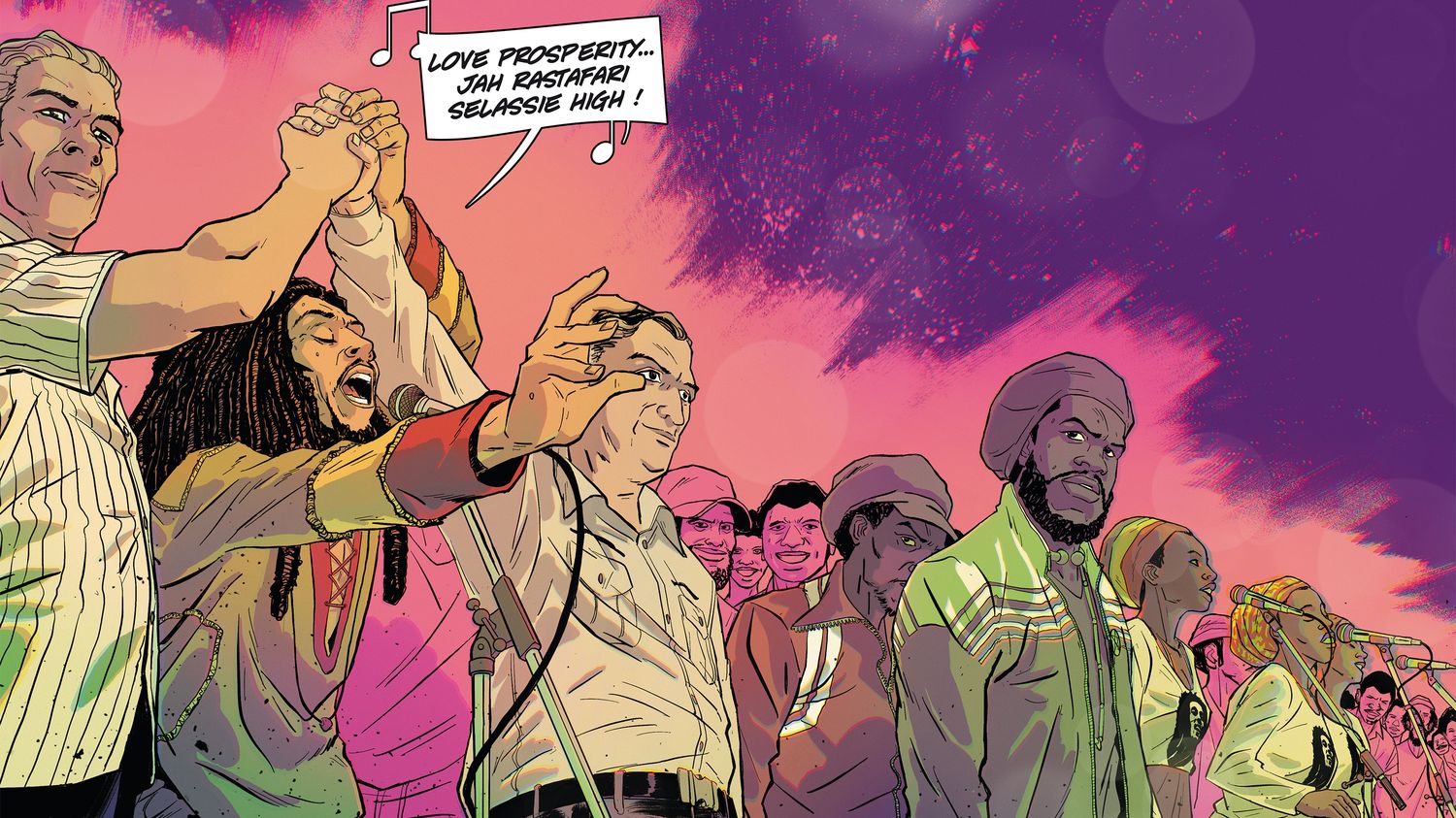If you still haven’t had your fill of Bob Marley, whose biopic hits theaters on Wednesday, February 14, or want some insight into the famous “One Love Peace Concert” that closes the film, you can read this exciting investigation that the screenwriter went to meet several of the story’s protagonists .

Published
Update
Reading time: 3 min

It’s a comic, but it’s much more than that: Once upon a time in Jamaica (published by Futuropolis) is, above all, research. The one carried out by the Frenchman Loulou Dedola on the spot to understand what led to One Love Peace Concert history of April 22, 1978 in Kingston. The concert for which Bob Marley especially returned from London after two years of exile, after the assassination attempt on him in 1976.
Welcomed as a hero in Jamaica, the singer Get up get up he managed that day, despite the danger, to bring two of the island’s political rivals, Michael Manley and Edward Seaga, together on stage for an extraordinary handshake. At that time the first, a socialist from the PNP (People’s National Party), had been in power as prime minister since 1972. The second, a conservative in the colors of the JPL (Jamaica Labor Party), supported by Washington, was then the leader of the opposition. The two fiercely compete for power on a Caribbean island engulfed in a bloody civil war.
Bosses and politicians in troubled waters
Contrary to what the cover of the book, which is adorned with a portrait of Bob Marley, might lead you to believe, the author of the script, Loulou Dedola, who is a musician himself, learned to hold the bass by listening to the hits of the king of music. reggae, does not reflect on the rise of the latter and his Wailers. On the other hand, he is very interested in the relations between the politicians and the leaders of the Jamaican ghettos, those gangsters who kept a firm hold on their territories through murderous intimidation. Politicians were indeed looking at the slum electorate, crucial to winning elections.
In order to untangle this tangle and reconstruct how the story unfolded, Loulou Dedola went there, to the source. There he won the trust of several still living protagonists of the 1978 concert event and had a long conversation with them. In particular, he spoke with politician Edward Seaga (since deceased), with a well-informed police officer, with musicians such as Sly Dunbar and producers, but also with the wife of one of the most famous gang leaders, Claudia Massop, who was also Bob Marley’s childhood friend.
The two gangs decide to reconcile
His story shows how the idea of One Love Peace Concert germinated in prison in the minds of two bosses, two sworn enemies: Claudia Massop, who then rode for the JLP and held the dangerous Tivoli Gardens district, and Bucky Marshall, who worked with the PNP and held the Arnett Gardens slum. Their unexpected alliance had only one goal: to stop the blood of their community being shed in vain. “It is the politicians who wage war against each other through the communities.”, sums up the protagonist in the comic. “The people have nothing from the reckoning”..

After the two leaders agreed to a ceasefire, it remained to seal the pact with music. And who better than Bob Marley could hold this concert for peace, the profits of which would go to the poor? Once Marley was convinced to return, it was necessary to convince and bring together all the Jamaican producers, managers and prominent musicians, from Peter Tosh to Dillinger, Jacob Miller and the Inner Circle.
The rest, we know: Bob Marley “came to preach peace” brought two rival politicians, Manley and Seaga, on stage for a historic handshake. And afterwards? The clashes continued a few months later, bloodier than ever: the election campaign led to 883 murders. As for the two bosses, who became uncomfortable, quickly were eliminated A sad epilogue that made Marley say about the two politicians: “I should have killed them both.”
Let’s face it, it’s hard to follow at times due to the abundance of characters (kings, second-rates, politicians, musicians), alliances, betrayals, and low blows. But the tension runs through this comic, which is devoured like a thriller and whose elegant graphics, colors and very American comics by Luca Ferraro are appreciated. In any case, there would be reason to bring this story of national reconciliation to the big screen. It would undoubtedly be much more exciting, but much less feel-good than the Marley biopic currently in theaters.
“Once upon a time in Jamaica” by Loulou Dedola and Luca Ferrara (Futuropolis, 112 pages, 20 euros)


